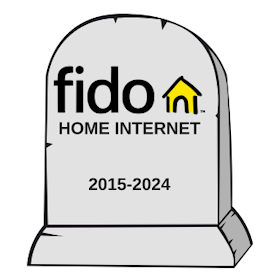
Article Summary
Our picks for the best free video conferencing apps for students, teachers, and remote workers include:
- Zoom—Best features for online learning and online teaching
- Google Hangouts—Best for simplicity of use
- Skype—Best for mid-sized groups and web-based calling
- Cisco Webex—Best for small teams on short calls
- Microsoft Teams—Best for Microsoft Office users
If you’re new to the world of virtual meetings, you might be wondering, “What is video conferencing, and which service should I use?” Video conferencing software is typically an installed app or browser-based service that lets a group meet in virtual “rooms” by video link. It’s like being in the office… but from your couch, while wearing your PJs.
Whether you're a student or teacher navigating the world of virtual learning, or a tech-savvy remote worker looking for the best video meeting app, the best video conferencing software includes enhanced collaboration features like group chat, screen and file sharing, and interactive whiteboarding. Here are our picks for the top video conferencing apps, plus some top-notch internet and data plans that ensure your meetings go smoothly.
Best Free Video Conferencing Apps
| Zoom | Google Hangouts | Skype | Cisco Webex | GoToMeeting | Microsoft Teams | |
|---|---|---|---|---|---|---|
| # of Supported Participants | 100 (More with paid account) |
25 (More with paid account) |
50 | 50 (More with paid account) |
3 (More with paid account) |
100 (More with paid account) |
| Meeting Time Limit | 40 minutes Paid account: Unlimited |
Unlimited | Unlimited | 40 minutes Paid account: Unlimited |
40 minutes Paid account: Unlimited |
60 minutes Paid account: Unlimited |
| Monthly Call Limit | Unlimited | Unlimited | 100 Hours | Unlimited | Unlimited | Unlimited |
| Features |
|
|
|
|
|
|
Zoom: Best Features for Remote Learning
| Pros | Cons |
|---|---|
|
|
Zoom has virtually (get it?) taken over the video conferencing market, becoming the most-used video call app for online learning, business meetings, and casual hangouts. A free account supports up to 100 participants, though if you have more than three people on your call, your meeting is limited to just 40 minutes (so make that PowerPoint presentation snappy!). If you want to use Zoom for online learning classes or business meetings, you can upgrade to a paid account and host sessions for as long as you want.
You can view up to 49 of your students (or co-workers) on one screen, and even customize your background. You can teach a class about Gettysburg and set up a background that shows you at the same site! That's the kind of magic that's only really possible in an online learning environment.
Zoom offers in-video chat plus simultaneous screen and file sharing for real-time collaboration. The whiteboarding feature allows teachers and students to write, draw, and highlight material in real time. Its audio and video quality is top-notch, so as long as your internet speed is up to snuff, you'll avoid the dreaded frozen screen. You can also access Zoom on your desktop or, if you’re meeting on the go, via its smartphone app.
As for security, Zoom now offers end-to-end encryption, basically ending the “Zoombombing” era. Along with end-to-end encryption, Zoom has taken additional measures to increase its privacy protocols, including implementing required meeting passwords by default. Now that security is less of an issue, Zoom is a great fit for online learning, virtual learning, and online teaching.
Google Hangouts: Best for Google Users
| Pros | Cons |
|---|---|
|
|
Google’s Hangouts app is a tried-and-true free video conferencing powerhouse and remains a solid choice for remote meetings. Anyone with a Google email address has access to the service from either its desktop platform or its dedicated smartphone app—and as many companies already integrate their own systems with the tech behemoth’s G Suite of products, Hangouts is a fast and accessible video conferencing system already on hand.
With a free Hangouts account, 10 people can gather in one virtual room—a respectable number, though a far cry from Zoom’s 100 participants. A single person can screenshare at a time, though all participants can utilize the chat sidebar to converse and share files during the presentation. Hangouts also includes dial-in capability for those who need to connect on the go.
Compared to the bells and whistles of Zoom, both Hangouts and Google’s paid version, Meet, lack a bit of luster. While Zoom allows meeting recording at all levels, only the most expensive paid version of Hangouts Meet supports this feature. The video quality can be a toss-up on any given day, depending on the number of participants on the call—which, as stated, only supports 10 people for free. That said, Hangouts’ free video conferencing app doesn’t limit your call duration, giving you as much time as needed to power through that brainstorm session. And Google’s end-to-end encryption offers reassurance for those worried about Zoom’s security issues.
Skype: Best Free Video Calling App
| Pros | Cons |
|---|---|
|
|
Skype is the OG of video calling and continues to be one of the best free video conferencing apps out there. The Microsoft-owned platform offers video calling for up to 50 people at once, live call captioning, and even background blurring technology (for those days where you just don’t feel like cleaning before turning on your camera). Known for its web-based voice calling as much as its video conferencing capabilities, Skype offers 10-way calling on a personalized phone number to aid in privacy, as well as session recording from both its desktop/browser apps as well as its mobile app.
Not everything is coming up roses for the app, however: Call and video quality is notoriously spotty, and as a Microsoft entity, Skype has limited integration with systems outside of the Office 365 suite. Yet with double the number of supported participants as Hangouts coupled with just a few more included sophisticated features, Skype comes out ever so slightly ahead of Google Hangouts as both a reliable and free video conferencing app.
Cisco Webex: Best for Quick Meetings
| Pros | Cons |
|---|---|
|
|
Cisco’s free video conferencing option is excellent for smaller teams who typically engage in quicker meetings. You get a respectable allowance for participants—up to 50 for a free personal account—for as many meetings as you want, and you have access to collaborative features like interactive whiteboards, message threads, and animated GIFs to spice up your call. You can also personalize your video feed view on your own screen. But your meeting time is limited to 40 minutes, so you’ll have to put your speed-talking skills to good use if you max out your participants.
Once you upgrade to a paid account, your conferencing world opens up quite a bit. You’ll be able to record and transcribe your meetings, integrate your account with other applications like Facebook, Slack, and Google Calendar, and utilize up to 10GB of cloud storage depending on which tier your company chooses.
Microsoft Teams: Best Bundle Option
| Pros | Cons |
|---|---|
|
|
Zoom gives the highest-quality video conferencing experience, but Microsoft Teams can offer you a whole suite of tools to go along with your video conferencing app. You can use Microsoft Teams for free, but the intention with Microsoft is to bundle its entire suite of programs under one umbrella. If you prefer using Microsoft tools over Google tools (like Microsoft Word over Google Docs, for example), then it makes sense to commit to Microsoft’s video conferencing app as well.
The Microsoft Suite allows you to bundle together several office programs and get an upgraded version of Microsoft Teams that allows for 300 participants at once. Folks who want a one-stop-shop for video conferencing and other Microsoft programs, the Microsoft Suite offers a lot of bang for your buck.
That said, even with Microsoft's extra programs, Zoom still offers a better video conferencing experience. Microsoft has never been known for its awesome user experiences, and it's the same story with Microsoft Teams, which isn’t nearly as user-friendly as Zoom.
Also, we can’t forget that Zoom nearly doubles Microsoft Team’s max meeting limit. For larger groups, Zoom just can’t be beat right now.
Honorable Mention: GoToMeeting
| Pros | Cons |
|---|---|
|
|
Previously a paid-only service, GoToMeeting has recently introduced GoToMeeting Free… but compared to its competition, it has some significant limitations. You can only meet with up to 3 people for a maximum 40 minutes per call, and many of the best features are reserved for its paid options. But you do get all of the basics that will satisfy most people’s video conferencing needs, including screen sharing and in-meeting chat with file sharing.
If you’re interested in upgrading to a paid account, GoToMeeting’s capabilities open up considerably. You’ll get support for 150-3,000 people depending on your price level, and you have unlimited call time at your disposal. Much like Zoom, GoToMeeting has sophisticated conferencing features such as personal meeting rooms, group and private chat, and screen sharing. The higher-tiered plans include unlimited cloud storage and video session recording, note-taking, and drawing tools (much like Zoom’s whiteboard feature). It also has a unique Commuter Mode, allowing you to participate in your video conference while on the road without sacrificing your safety.
All that said, if you only have a small number of people you need to connect with, one of the above free options is likely a better choice for you.
Internet Plans for Video Conferencing
No matter how high-tech your video conferencing equipment is, it will be all for naught unless you have an adequate internet plan that supports your video calling needs. Even if your software claims to adapts to your connection quality, you still want to make sure you’re setting yourself up for a smooth experience.
Here are a couple of the most popular internet plans for video conferencing.
Data Plans for Video Meetings
If you’re jumping into your meeting from your commute, you’ll need a good wireless data plan—preferably an unlimited plan with hotspot accesshttps://www.whistleout.com/Int.... Here are a few plans that fit the bill.
Related Articles
Find Better Internet and Phone Plans
Hundreds of internet plans unpacked. All the facts. No surprises.
Internet Providers by Provinces and Territories
- Internet in Alberta
- Internet in British Columbia
- Internet in Manitoba
- Internet in New Brunswick
- Internet in Newfoundland and Labrador
- Internet in Northwest Territories
- Internet in Nova Scotia
- Internet in Nunavut
- Internet in Ontario
- Internet in Prince Edward Island
- Internet in Quebec
- Internet in Saskatchewan
- Internet in Yukon Territory



















































